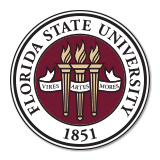
After graduating in 1990 with a B.S. degree in Mechanical Engineering from the FAMU-Florida State University College of Engineering, Melissa Van Dyke went on to pursue her dreams of working on space systems at the NASA Marshall Space Flight Center in Huntsville, AL. She started her career in propulsion systems and was responsible for performing Space Shuttle Solid Rocket Motor Booster post-flight safety inspections. Over the next 26 years, Van Dyke supported the development and operations of solid and liquid propulsion systems for NASA’s mainline programs (e.g. SLS) while simultaneously pursuing technology development in the areas of cryogenic fluid management, nuclear power and propulsion systems, and thermal analysis.
Van Dyke led a team of engineers to create the first facility in the world capable of testing nuclear power systems using non-nuclear means to mimic heat and power deposition and reactivity feedback/control of a reactor system. While serving as the Propulsion Thermal Analysis Branch Chief, her branch created a high temperature infrared camera fusion system which is now standard equipment for both NASA and industry rocket testing. She currently serves as the Deputy Chief Engineer and Deputy Supervisor of the Science and Technologies Project Office, Chief Engineer’s Office where she helps manage a team of more than 15 Chief Engineers covering ~30 projects that include Nuclear Thermal Propulsion, IXPE (a $185M telescope), and the Europa Lander Solid Rocket Motor Deorbit stage.
Melissa Van Dyke has authored/co-authored over 15 papers and has received NASA’s Exceptional Achievement Medal, NASA’s Outstanding Leadership Medal, NASA’s Space Flight Awareness Management Award, and the American Institute of Aeronautics and Astronautics Alabama-Mississippi Section Aerospace Engineer of the Year Award.

